What To Expect From The Neuromonitoring Field In The Future?
Anyone else want to make some predictions about the neuromonitoring field?
Let’s talk about what we can expect out of neuromonitoring in the near future. This line of conversation seems to come up a lot. I’ve been asked it on interviews, over beers with peers and by those looking to get into the neuromonitoring field.
I’ll stick my neck out there a little and make some of my own predictions, but the real fun can be had in the comments section. If you’ve been following along this “30 Days of Neuromonitoring,” you know that I’ve begged and pleaded for people to join in the conversation. I think most people shy away because they are afraid of being wrong and judged by others.
But this post is a little different. You can very well expect to be wrong.
Just recently, we saw how people that devote their entire life to forecasting aren’t much better than flipping a coin. An abbreviated conversation of November 8th sounded a lot like this… “Trump will never be president… Oh, wait, he just got elected. Get ready for a huge sell-off and kick off to the next recession tomorrow morning. Oh, wait, the Dow is up.”
So don’t be scared. Your crystal ball is as cloudy as everyone else.
The Future Of The Neuromonitoring Field:
- The field continues to get smaller by getting larger. I don’t see the consolidation of the neuromonitoring field slowing down at all. It seems the really small neuromonitoring companies that have just a few accounts, rock solid relationships, and low overhead are still making it. But the problems that come along with growth seems to be too much for slightly larger companies to be competitive. I am definitely a victim of recency bias, but each year there have been multiple major acquisitions.
- Insurance companies control the ceiling and lawyers control the floor. Even though Americans might be looking at major reform in Obamacare, I don’t see the insurance companies giving up what they currently have their claws in. There could very well be some additional downward pressure on reimbursement and reassignment of who is paying what. At the same time, our litigious society works in our favor in the sense that IONM prevents injury and that swings it from option to necessity in some cases.
- Neuromonitoring companies will get more sophisticated. They have to in order to compete. And the first 2 predictions are the driving forces behind it. Because we are seeing partnering of the middle size companies into large size companies, they are capable of looking at large sums of data. They also have the money for research, designated quality assurance teams, etc. And it is very much in the favor of the field to start looking at cost effectiveness and defining best practices in order to maintain payment from 3rd party payors and avoid costly lawsuits for not maintaining a standard of care. These large companies will start to do what we currently only get from our associations… shaping and defining best practices.
- We will have a wider variety of health degrees interested in neuromonitoring, but less unrelated degrees in the field. At some point a degree in neuromonitoring might become the norm, but not in 2017. Before we get to that point, ABRET will start to change their requirement for accepting candidates with any bachelor’s to requiring specific core classes being required. The DABNM board already does this. So while you might still be able to have a masters in English, you’ll still need to have those science classes. That wouldn’t eliminate the variety but will limit the amount of people looking to get into the field. Now that most hospitals are requiring a CNIM or D.ABNM in order to get into their OR, everyone is going to have to play along. This is a good thing.
- Neuromonitoring grows even more internationally. The neuromonitoring field is very much dominated by the US, but there is already established practices internationally. If you’re wondering where those might be, checking out where the International Society of Intraoperative Neuromonitoring is holding events. You can also look on PubMed and see where the literature is coming from. Recruiters will also tell you about the increasingly high number of clinicians looking to take their experience overseas and get a job in the US.
How about you? What direction do you see the neuromonitoring field going?
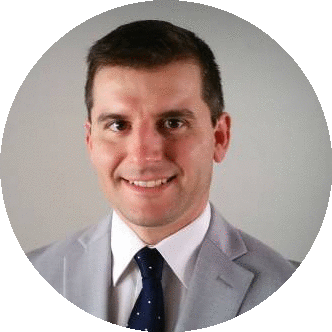
Joe Hartman
Subscribe to our Awesome Newsletter.
6 Comments
Keep Learning
Here are some related guides and posts that you might enjoy next.
How To Have Deep Dive Neuromonitoring Conversations That Pays Off…
How To Have A Neuromonitoring Discussion One of the reasons for starting this website was to make sure I was part of the neuromonitoring conversation. It was a decision I made early in my career... and I'm glad I did. Hearing the different perspectives and experiences...
Intraoperative EMG: Referential or Bipolar?
Recording Electrodes For EMG in the Operating Room: Referential or Bipolar? If your IONM manager walked into the OR in the middle of your case, took a look at your intraoperative EMG traces and started questioning your setup, could you defend yourself? I try to do...
BAER During MVD Surgery: A New Protocol?
BAER (Brainstem Auditory Evoked Potentials) During Microvascular Decompression Surgery You might remember when I was complaining about using ABR in the operating room and how to adjust the click polarity to help obtain a more reliable BAER. But my first gripe, having...
Bye-Bye Neuromonitoring Forum
Goodbye To The Neuromonitoring Forum One area of the website that I thought had the most potential to be an asset for the IONM community was the neuromonitoring forum. But it has been several months now and it is still a complete ghost town. I'm honestly not too...
EMG Nerve Monitoring During Minimally Invasive Fusion of the Sacroiliac Joint
Minimally Invasive Fusion of the Sacroiliac Joint Using EMG Nerve Monitoring EMG nerve monitoring in lumbar surgery makes up a large percentage of cases monitored every year. Using EMG nerve monitoring during SI joint fusions seems to be less utilized, even though the...
Physical Exam Scope Of Practice For The Surgical Neurophysiologist
SNP's Performing A Physical Exam: Who Should Do It And Who Shouldn't... Before any case is monitored, all pertinent patient history, signs, symptoms, physical exam findings and diagnostics should be gathered, documented and relayed to any oversight physician that may...

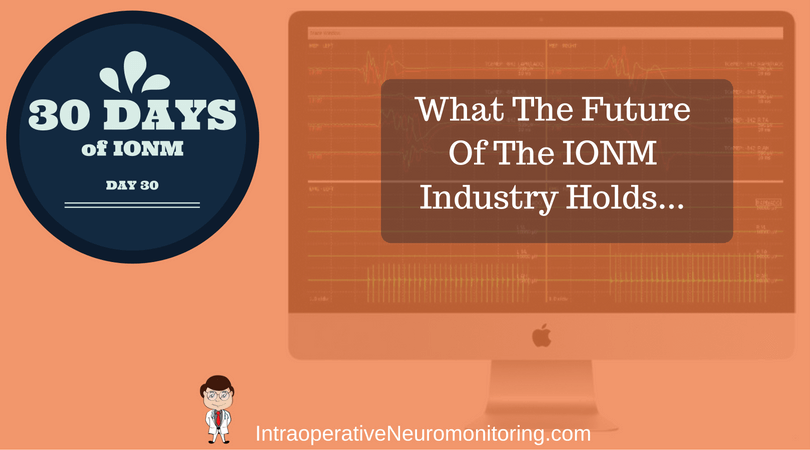
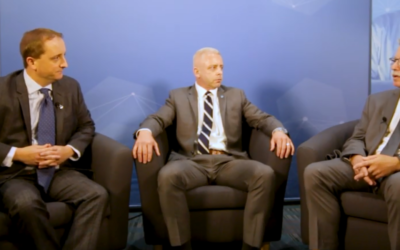
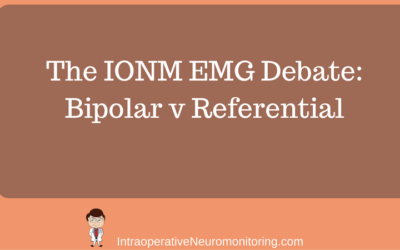
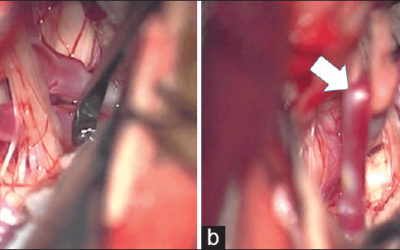
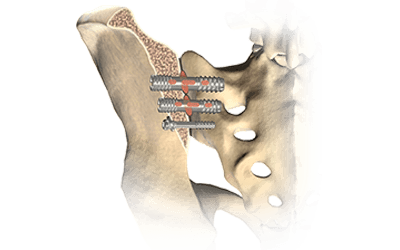


Thank you Dr. Hartman for sharing your experience and knowledge, after attending the AANS meeting I think we have a great support from surgeons all over the world with that being said neuromonitoring will become a necessity, what I would like to see is the neurologists going back to their clinics giving the neuromonitoring reimbursement to the surgeon and his surgical neurophysiologist in the room.
I feel IONM companies will have to also think about taking over Neurodiagnostics which include routine EEG, ICU EEG, 24 to 72 hour video EEG, Evoked Potentials ect. As CEOS of medical institutions look to cut back the neuro departments are typically small and these CEOs are going to ask why your IONM company can’t take over this department so that can save the hospital money by outsourcing the remaking of Neurodiagnostics. CNIMs will have to eventually have a strong EEG background or your company will have to hire individuals who do have the background. This I believe is the. future of these companies as most hospitals are outsourcing IONM currently and will soon want to outsource the department.
I am seeing this as well. Nothing on a large scale, but it very well could get to that point. The demand seems to want dedicated EEG people (that I’ve seen) as opposed to a someone that rotates IONM and EEG throughout the week. I’m not sure everyone is going to have the ability to meet that demand, especially in low volume situations. I still think it is unclear to most companies on how to look at this potential… as either a diversifier to better protect their downside or a drain on resources with lower reimbursement rates.
I know EEG is not the same reimbursement and it is much lower reimbursement as compared to IONM but there are long-term videos and sometimes in order to maintain contracts you already have you have to be prepared to provide other Neurodiagnostics.
Is anyone concerned about IONM becoming automated in perhaps the not-so-near future? I am a bit concerned because we see spinal device and hardware companies developing more and more advanced systems that allow the surgeon to monitor without a monitoring tech. This isn’t the case for EEG, which has been around much longer and developed less effective technological substitutions for the good ol’ EEG tech.
For now we have the advantage of being skilled at troubleshooting and critical thinking which gives more confidence to a surgeon than a machine, but with the speed of advancement in the tech world, is it possible that there could be an AI IONM machine reading our N20’s?
I also agree there is the concern of automated IONM equipment and these machines are actually going to be run by the surgeons doing the surgery. This is another reason to be poised to take over the Neurodiagnostics labs by being able to do a full routine EEG, Ambularoiry 24 to 72 hour Video EEG, routine Evoked Potentials which are very low reimbursement, but if done before other more expensive testing can save a lot of unnecessary more expensive testing ( agree these test need to be much better reimbursed ) NCV. This is why I do not agree with anyone calling themselves a’neurophysiologist’ just because you have a CNIM. If you cannot do the other neurophysiological testing how can you declare you are a ‘neurophysiologist ‘? The description of a neurophysiologist is one whom is an MD that specializes in studying (becoming. a fellow, another couple of years studying a specialty) to call himself a neurophysiologist. If you are going to call yourself this I feel you need to be able to crossover into other routine Neurodiagnostics. I also believe ASET made a grave error of judgement by letting anyone with a four year degree take the CNIM without acing a registry in Evokes or EEGs or NVC or a PSGT. I have been in IONM sunset it started in approximately 1983/84 with a 2 channel Teca and that is due to no one else in any of the other OR Fields wanted it. I was a t OJT EEGT and later became a REEG/EPT., CNIM but later due to a coma 09/2006 at the same time as my CNIM was due to be renewed 12/2006. I had 40CEUs and 20 CEUs was in my storage unit and had not been placed in the system so my CNIM was expired. I was a # 12. And we were not at the time calling ourselves ‘ neurophysiologist’ and would have never thought of ourselves as that. This ‘neurophysiologist ‘ term started with people whom had a 4 yr degree and managed to pass the CNIM. I could pass that test as long as it was just a written test and I was pointed in the right direction of studies. I have worked with CNIMs whom consider themselves above REEGT and that I believe is because not all of them have a degree when in actuality you would be surprised by how many do. IONM is based on EEG principles and it was EEG techs whom were in there first. If you cannot do all three evokes routinely in a neuro lab or an EEG that is routine you do not belong in the OR as an IONM. If you have a dipolomat that may be a different argument but I believe even then you should no all the principles of the other Neurodiagnostic tests even EMG/NCV.